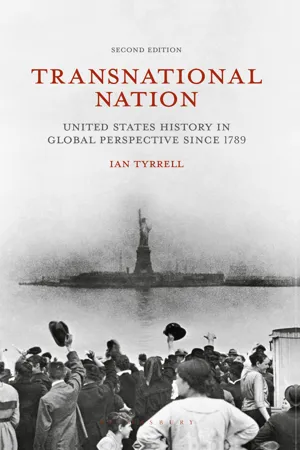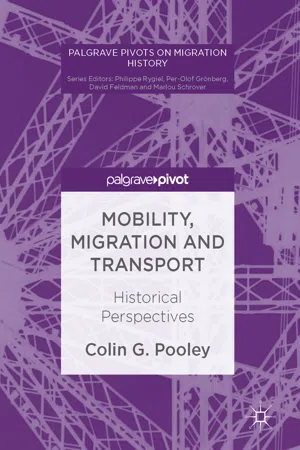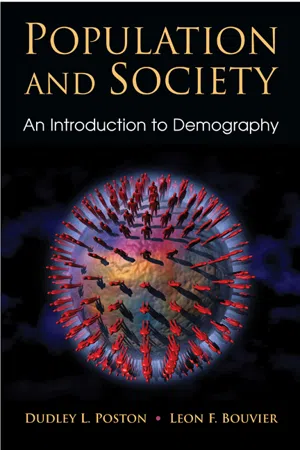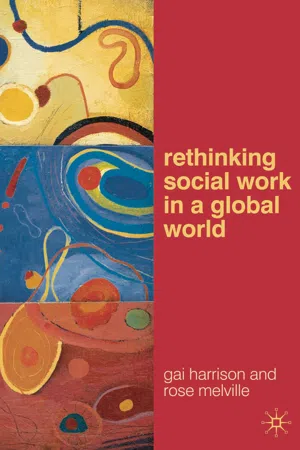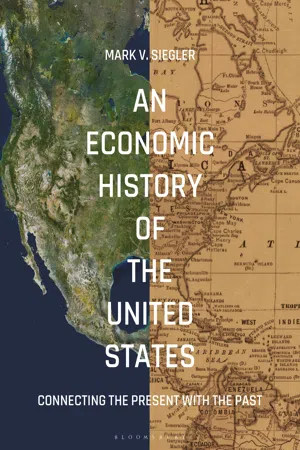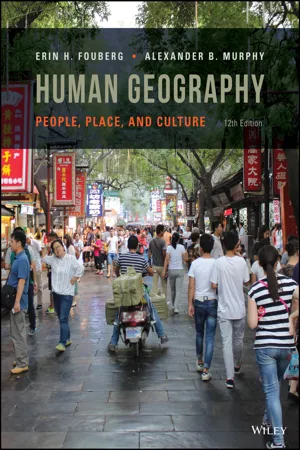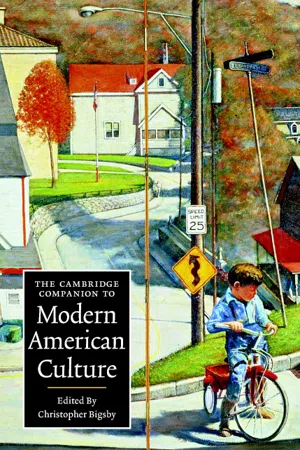History
Immigration
Immigration refers to the movement of people from one country to another with the intention of settling permanently. Throughout history, immigration has been a significant factor in shaping the cultural, social, and economic landscapes of nations. It has often been driven by factors such as economic opportunities, political instability, and social or religious persecution.
Written by Perlego with AI-assistance
Related key terms
1 of 5
9 Key excerpts on "Immigration"
- eBook - PDF
The New Americans
A Guide to Immigration since 1965
- Mary C. Waters, Reed Ueda, Mary C. Waters, Reed Ueda, Helen B. Marrow(Authors)
- 2009(Publication Date)
- Harvard University Press(Publisher)
Economic differentials were usually not sufficient in themselves to gen-erate the movement of populations, however. The impulse for self-betterment and the willingness to live and work in another country were based on social communi-cation about Immigration opportunities and also on subjective factors shaped by at-titudes toward risk and a psychology of future-mindedness. From the cold war to the start of the 21st century, Immigration achieved unprec-edented velocity, mass, spatial extension, and complexity. Concurrent with waves of permanent settlement, transient migration and repeat migration developed into commonplace phenomena, and the maintenance by migrants of active connections with their homelands coexisted with their integration into their host nations through acquisition of citizenship, acculturation, and social mobility. Through international migration, the whole world was in motion as never be-fore. Estimates of the global total of international migrants rose from 75 million in 1965 to 120 million in 1990 and to 175 million in 2000. The number of immi-grants grew more in the last decade of the 20th century than it had in the previous 17 Immigration in Global Historical Perspective 25 years. Furthermore, it is likely that the cumulative worldwide total of immi-grants in the last half of the 20th century surpassed the total of immigrants from 1830 to 1930. Throughout the 500-year evolution of modern world migration, the 13 colonies in British America and the successor United States acted as a destination hub of in-ternational migration. The role of the U.S. in the globalization of international mi-gration became paramount because it was produced by powerful long-term histori-cal trends. In the country’s colonial beginnings, the search for and recruitment of immigrants was a matter of constant concern. - eBook - PDF
Transnational Nation
United States History in Global Perspective since 1789
- Ian Tyrrell(Author)
- 2015(Publication Date)
- Red Globe Press(Publisher)
60 4 People in Motion: Nineteenth-Century Migration Experiences Americans have normally conceived of migration as a one-way process. Immigrants entered Castle Garden (and later Ellis Island) in New York from Europe to begin the painful and inevitable process of losing their culture and assimilating in a melting-pot process. Yet the resistance of immigrants to rapid assimilation makes the melting pot too crude an idea. Nowadays other metaphors prevail, designed to represent the diverse origins and inter-woven cultures of Americans. Modern historians tend to see the United States as a salad bowl, a quilt or a continuing conversation over national identity. The new multiculturalism recognizes important transnational influences in the making of Immigration, but to a large degree the nation’s internal social history is still treated as distinct from migration considered as an economic and cultural system. The legal frameworks of Immigration created national boundaries, but until 1924, there were few controls over Immigration, and none except for those against Asian people were effective before the First World War. For this reason alone the transnational aspects of migration stand out, not only as a diverse process, but also as a recipro-cal and multilateral one. Topics such as internal geographical and social mobility are also difficult to separate from migration’s ebbs and flows. It is preferable to think, therefore, of Immigration as part of a larger system of ‘movement’ made possible by global changes in communications and market dislocation. 1 It is a cliché to call the United States a nation of immigrants. With this glib phrase goes a connotation of exceptional status that is not entirely warranted. All new human settlement involves the mingling of peoples and cultures, and even when comparing migration only in the modern period since the age of the democratic and industrial revolutions, the American case is not unique. - eBook - PDF
Mobility, Migration and Transport
Historical Perspectives
- Colin G. Pooley(Author)
- 2017(Publication Date)
- Palgrave Macmillan(Publisher)
In such movements it can be suggested that we see the development of transnationalism – the retention of ties to more than one country following migration – long before it became fully recognised as a common twenty-first century characteristic of global migration (Vertovec 2009; Van Hear 2014). Sometimes migration historians attempt to differentiate between voluntary and involuntary migra- tion, but for most migrants this distinction is blurred. Truly involuntary MIGRATION AND MOBILITY THROUGH THE LENS OF HISTORY 23 movements were those undertaken under conditions of custody or slavery, as was the case for those transported as convicts from Britain to the Americas and Australia and, most significantly, those Africans shipped from West Africa under the harshest conditions to be sold as slaves in America and the Caribbean (Thomas 1997; Kercher 2003; Klein 2010). All other migration decisions occur as a result of a combination of pull and push factors; though in many cases – for instance refugees fleeing war or persecution – the migrants may reasonably feel that they have no option but to move (Black and Robinson 1993). It can also be argued that where a migration decision is taken by the (usually male) household head family dependents (especially young children) are forced to move. Migration history is diverse and covers a wide range of topics, but for the most part research has been concerned with five major areas of interest. First, some research focuses on the demographic impacts of migration, concentrating on the ways in which population movement alters the size and, especially, composition of regions and nations. Second, and related to this, research also examines the social and eco- nomic impacts of out-migration on areas of origin, especially with regard to rural population loss and the economic effects of out-migration by those with particular skills. - eBook - PDF
Population and Society
An Introduction to Demography
- Dudley L. Poston, Jr., Leon F. Bouvier(Authors)
- 2010(Publication Date)
- Cambridge University Press(Publisher)
7 International Migration INTRODUCTION The first “international” migrations of humans began around 60 thousand years ago, and they continue to this day. Of all the demographic topics presented in this book, none is discussed by both laypeople and social scientists these days as frequently and as forcefully as international migra- tion. International migration is migration that occurs between countries. Its dynamics differ significantly from those of internal migration, that is, migration within the geographical boundaries of a single country, the sub- ject of the last chapter. The concepts and theories of international migration are also somewhat different from those of internal migration. We begin by considering some of the definitions and concepts used in the study of international migration. We next cover world Immigration patterns over time, followed by a discussion of Immigration into the United States. We then look at the major theories of international migration, as well as some of the positive and negative economic issues pertaining to international migration. This is followed by a consideration of legal and unauthorized Immigration. We conclude with a discussion of the meaning of the concept of zero net international migration. DEFINITIONS AND CONCEPTS Somewhat similar to the situation with the study of internal migration, demographers have developed a fairly standard set of concepts and defini- tions for studying international migration. The first distinction is between Immigration and emigration. Immigration refers to the migration of people into a new country for the purpose of establishing permanent residence; an immigrant is a person who enters a new country of permanent residence and crosses an international boundary in doing so. These concepts are anal- ogous in the study of internal migration to in-migration and in-migrant. Conversely, emigration refers to the permanent departure of people from 196 - eBook - PDF
- Gai Harrison, Rose Melville(Authors)
- 2009(Publication Date)
- Bloomsbury Academic(Publisher)
51 Chapter 4 Immigration and People Movement in a Global World Introduction In this chapter, we foreground some more recent trends in people move-ment on a global level and how this impacts our understanding of practice with immigrant and refugee populations. Migration is in fact a centuries-old practice and in that sense does not constitute a new phenomenon. However, what is noteworthy in the current context is the increased num-bers of people moving around the world and the complex nature of these patterns of migration. In the first part of this chapter we briefly examine migration and globalization from both a historical and contemporary vant-age point. Following on from this discussion we chart some more recent trends in people movement, before moving on to explore the vexed issue of border control. Next, we examine how traditional ideas about the links between citizenship and the nation state are being contested in a global, post-colonial era by those who seek to promote more inclusive forms of global citizenship. In this context, the increased movement of people across borders challenges state-centric notions of citizenship. Finally, we explore the implications of these migratory processes for social work practice, with particular reference to those countries where cross-border movement is strictly regulated. In this section we also consider the role of social work in addressing migration-related concerns. Immigration in the era of globalization Globalization has been implicated not only in the increased flows of cap-ital, goods and ideas across borders but also in the increased movement of people across borders. Indeed, it has been suggested that border move-ments, both in terms of people moving around the globe and people adopt-ing border identities, shape the local demographics of social work practice (Martinez-Brawley and Brawley, 1999). - No longer available |Learn more
An Economic History of the United States
Connecting the Present with the Past
- Mark V. Siegler(Author)
- 2017(Publication Date)
- Red Globe Press(Publisher)
307 15 Immigration and Immigration Policies The Old World arrived in the New World in three distinct ways: colonization, coercion, and Immigration. 1 Colonists from England, France, Spain, Sweden, and the Nether-lands established colonies in North America during the voyages of discovery. Coer-cion also contributed to population growth and economic development through the importation of African slaves (who were 19 percent of the U.S. population by 1790) and the incorporation of Native American, French, Spanish, and other populations as the U.S. expanded westward through conquest and purchase. The third way depended on Immigration; that is, on the voluntary decisions of tens of millions of people to migrate to the United States. Since 1820, more than 80 million people have made the decision to come to the United States, which is more than have migrated to any other country in the world. 2 Many factors contributed to the large number of immigrants over the last two cen-turies. 3 Rapid economic growth and technological progress have dramatically lowered transportation costs and made ocean voyages faster and safer. Technological progress led to improved communication, which has made people more aware of opportunities elsewhere. Because the rate of economic growth has varied considerably from country to country since 1800, the “Great Divergence” in average living standards across countries has provided increased incentives for those from poorer countries to move to richer countries. Finally, the twentieth-century surge in population growth in devel-oping countries has greatly increased the young, working-age populations in those countries, the age group most likely to emigrate. The focus of this chapter is on the causes and effects of Immigration, as well as on how U.S. policies have affected Immigration flows. Immigration waves in the nine-teenth century are connected to economic changes taking place on both sides of the Atlantic. - eBook - PDF
Human Geography
People, Place, and Culture
- Erin H. Fouberg, Alexander B. Murphy(Authors)
- 2020(Publication Date)
- Wiley(Publisher)
The difference between Immigration and emigration is net migration. Before 1996, Ireland had more emigrants (people leaving Ireland) than immigrants (people coming to Ireland), so it had a negative net migration. From 1996 to 2009 and again since 2015, Ireland has had more immigrants than emigrants, giving it a positive net migration (Fig. 3.5). Net migration can be added to births and deaths (see Chapter 2) to understand whether a country’s population is growing or declining. FIGURE 3.4 Little Havana, Miami. A Cuban restaurant advertises mojitos and Cuban foods to passers-by on a corner of Little Havana. Cuban cafes and restaurants, cigar stores, mosaic tile work, statues of famous Cubans, Catholic churches, and vibrant facades and murals are all part of the cultural landscape of the ethnic neighborhood. The neighborhood dates to the 1960s and the first major migration of Cubans to Miami. Karel Miragaya/123 RF 66 CHAPTER 3 Migration Major Migration Paths Major migration paths at the global scale since 1500 are shown in Figure 3.6. The migration flows include movements from Europe, including (1) from northern and western Europe to North America; (2) from southern Europe (Spain and Portugal) to South and Central America; and (3) from Britain and Ireland to Africa and Australia. The migration flows also include involuntary (forced) migration caused by Europeans, including (4) enslaved Africans from Africa to the Americas; and (5) indentured laborers from South Asia to eastern Africa, Southeast Asia, and Caribbean America. Among the greatest human migrations in recent centuries has been the flow from Europe to the Americas (arrows 1 and 2 in Fig. 3.6). Before the 1830s, 2.75 million Europeans migrated overseas. British migrants went to North America, Australia, New Zealand, and South Africa (arrow 3 in Fig. 3.6). Spanish and Portuguese migrants settled in South America (arrow 2 in Fig. 3.6). - eBook - PDF
- Ronald Skeldon(Author)
- 2021(Publication Date)
- Edward Elgar Publishing(Publisher)
34 3 Migration conceptualized: the socio-economic context Why people decide to move is a simple question that elicits complex and multi-layered answers. Whether we are trying to explain aggregate migration flows or why individuals choose to participate in those flows will require different approaches and different data. Certainly, individ- uals create the flows, but the reasons why migrants move differ and they illustrate the differences between the macro- and micro-level approaches discussed in Chapter 1. As will be seen, an element of the micro- will always be present in the macro-, and vice versa, but the form of expla- nation varies depending upon whether we are trying to account for the aggregate or the individual. An explanation for migration is of a different order from an explanation why individual migrants choose to move, even if the approaches of the one can inform the findings of the other. This chapter commences with the more macro-level approaches and moves towards the more micro- but proceeds in a more or less chronological order to show the shifts in thinking about migration and linkages among the several ideas. Antecedents Towards the end of the nineteenth century, the German-English geogra- pher and statistician Ernst Georg Ravenstein published two articles that can be seen as providing the foundation upon which modern migration studies were subsequently built. 1 Based upon an examination of inter- nal migration in Britain, Ravenstein formulated a number of “laws of migration” that today we would term “generalizations”. While the actual MIGRATION CONCEPTUALIZED: THE SOCIO-ECONOMIC CONTEXT 35 number of these generalizations was never entirely clear, the best guide remains Grigg who identified 11 (see Box 3.1). 2 BOX 3.1 RAVENSTEIN’S LAWS OF MIGRATION 1. The majority of migrants go only a short distance. 2. Migration proceeds step by step. 3. Migrants going long distances generally go by preference to one of the great centres of commerce or industry. - Christopher Bigsby(Author)
- 2006(Publication Date)
- Cambridge University Press(Publisher)
If these are myths when applied to the generality of immigrants, what are the realities? The motives that impel an individual to leave one way of life and exchange it for another are often complex, but, by and large, economic motives – the desire to improve one’s position in life, to provide a better life for one’s children – are the major causal factors. Table 4.1. Foreign-born in the United States, 1850–2000 Year Number (in millions) Percentage 1850 2.2 9.7% 1860 4.1 13.2% 1870 5.6 14.0% 1880 6.7 13.3% 1890 9.2 14.7% 1900 10.4 13.6% 1910 13.6 14.7% 1920 14.0 13.2% 1930 14.3 11.6% 1940 11.7 8.9% 1950 10.4 6.9% 1960 9.7 5.4% 1970 9.6 4.7% 1980 14.1 6.2% 1990 19.8 7.9% 2000 21.1 11.1% Source: US Census data. A most useful analysis is in Campbell J. Gibson and Emily Lennon. “Historical Census Statistics on the Foreign-born Population of the United States:1850–1990,” Population Division Working Paper No. 15, Washington: US Bureau of the Census, February, 1999. roger daniels 74 From the beginning the vast majority of immigrants came – or were brought – to America to work. It follows, then, that immigrants were, disproportionably, of working age. Most were between their late teens and late thirties, and relatively few were either children or over forty. Given the nature of paid employment before the most recent decades, immigrants were predominantly male. Since 1950, for a variety of reasons there has been a slight female majority among legal immigrants to America. The evolution of american Immigration policy to 1917 For the first centuries of American history there was a vast continent to fill up, so the more the merrier. Interruptions of immigrant flows resulted chiefly from wars and unenforceable policies of European powers to halt or minimize emigration.
Index pages curate the most relevant extracts from our library of academic textbooks. They’ve been created using an in-house natural language model (NLM), each adding context and meaning to key research topics.

